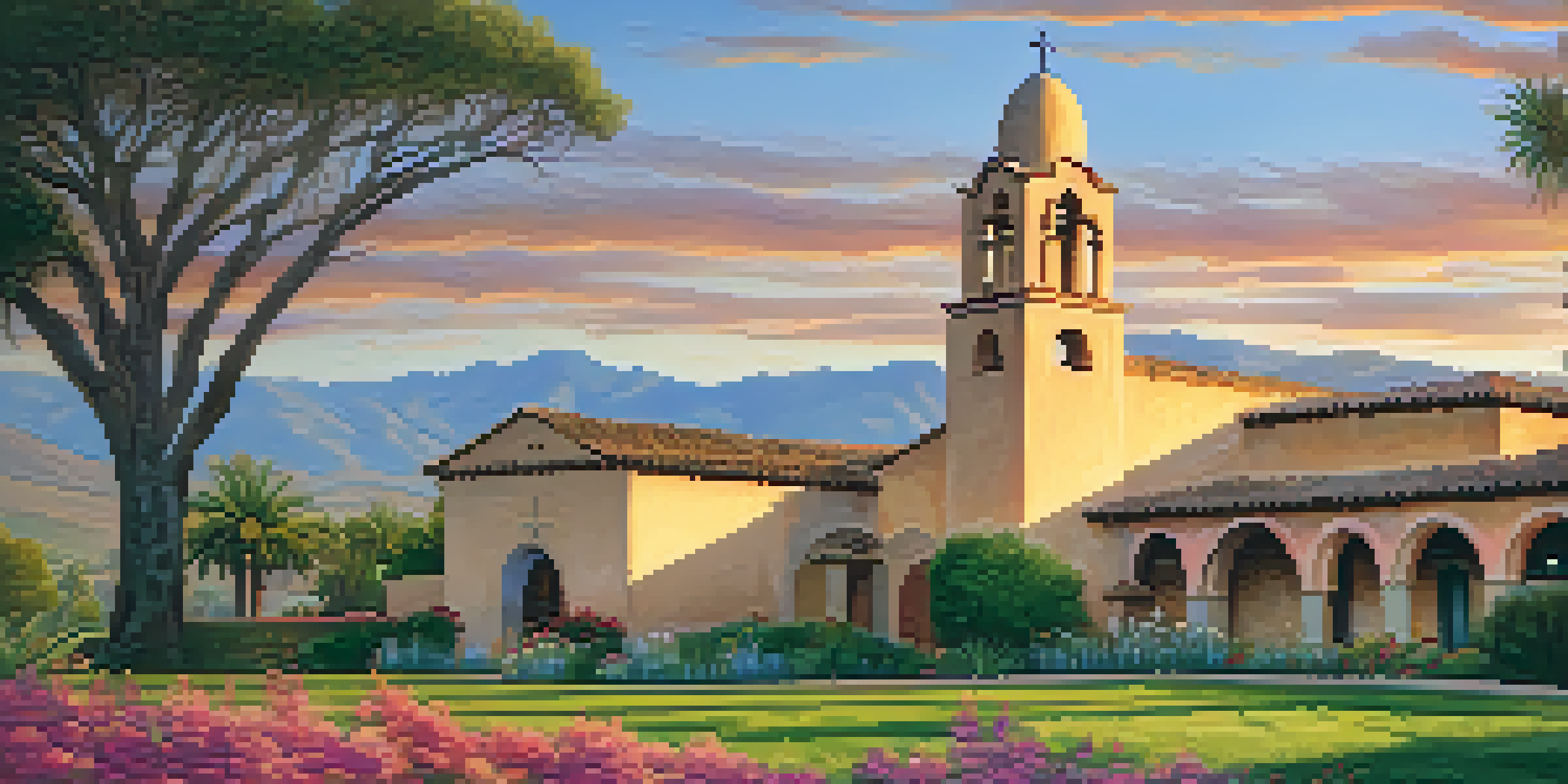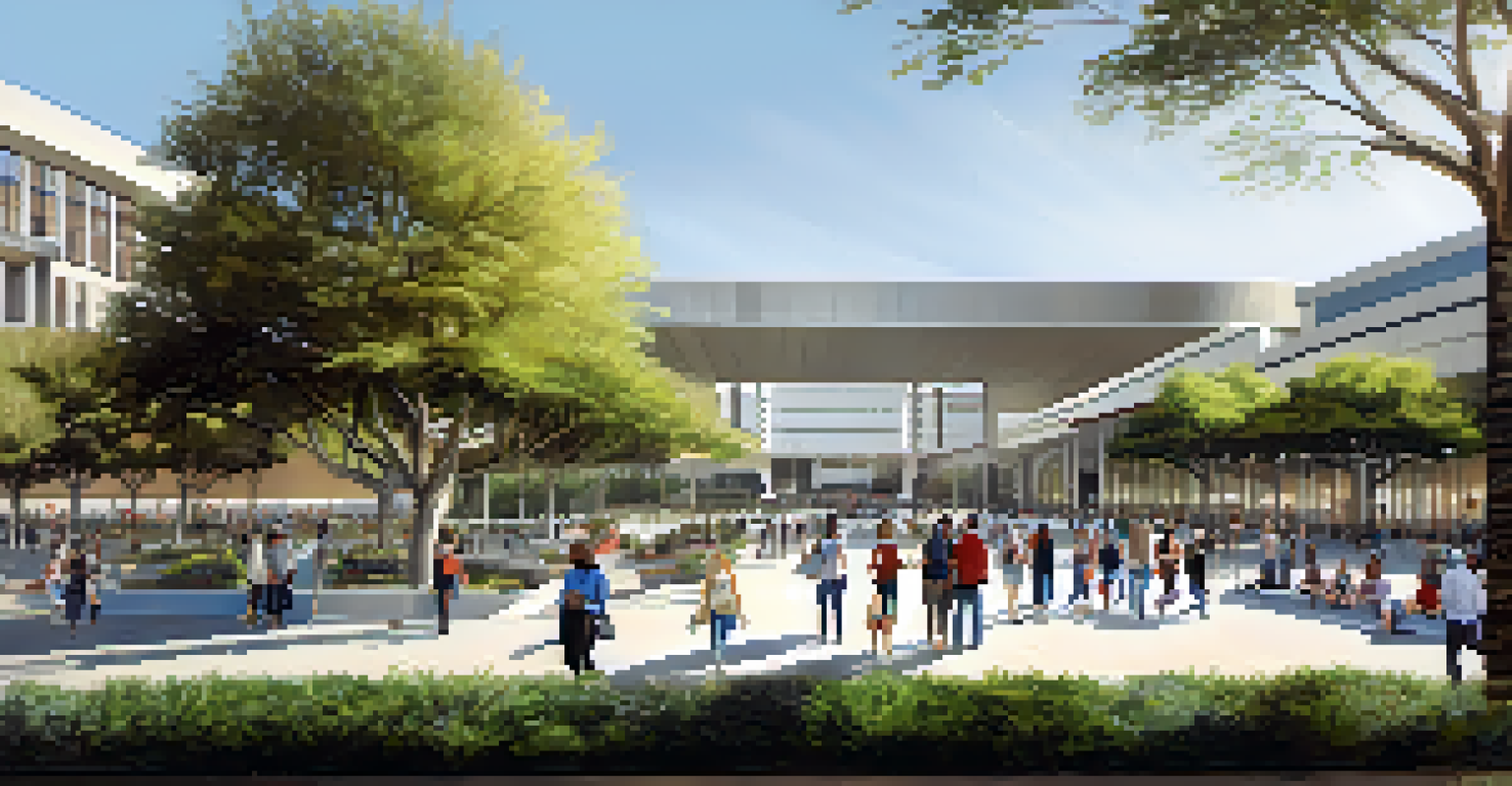The Impact of Urban Development on San Jose's Landmarks

The Historical Significance of San Jose's Landmarks
San Jose is home to a rich tapestry of landmarks that tell the story of its past. From the iconic Mission Santa Clara to the bustling San Pedro Square, these sites reflect the city's evolution over centuries. Each landmark serves as a reminder of the cultural and historical milestones that have shaped the community.
Preservation of our heritage is not a luxury; it is a necessity for the continuity of our culture.
However, as urban development continues to expand, these landmarks face challenges that could alter their significance. Developers often prioritize modern needs over historical preservation, leading to a potential loss of cultural heritage. This tension between growth and preservation is a crucial conversation in San Jose.
Understanding the importance of these landmarks helps us appreciate what is at stake. They are not merely structures but are symbols of identity and continuity for the residents. Protecting them while accommodating growth is a delicate balance that requires thoughtful planning.
Urban Development Trends in San Jose
San Jose has seen a surge in urban development, driven by a booming tech industry and population growth. This rapid expansion often means new housing, commercial spaces, and infrastructure improvements. While these developments can bring economic benefits, they also raise questions about the impact on existing landmarks.

One trend is the push for mixed-use developments, which combine residential and commercial spaces. This approach can lead to vibrant neighborhoods, but it can also overshadow historical sites. Residents often find themselves grappling with the question: how much modernity is too much?
Preservation vs. Urban Development
San Jose faces the challenge of balancing urban growth with the preservation of its historical landmarks.
In response to these changes, local leaders and community members are increasingly advocating for sustainable development practices. They aim to incorporate historic preservation into new projects, ensuring that the essence of San Jose's character is maintained amidst the city's growth.
The Challenges of Preservation Amidst Growth
Preserving San Jose's landmarks isn't just about maintaining old buildings; it’s about protecting the stories and memories they hold. Unfortunately, urban development often prioritizes new construction over preservation efforts. This can lead to the demolition of historic structures, which many residents find disheartening.
The past is never dead. It's not even past.
Additionally, the cost of preserving older buildings can be a significant hurdle. Developers may find it more financially viable to raze these sites rather than invest in their restoration. This creates a dilemma for city planners who must consider economic factors alongside cultural significance.
Community engagement plays a pivotal role in overcoming these challenges. By rallying together, residents can advocate for policies that protect their landmarks while still allowing for necessary development. This collective effort highlights the importance of a community’s voice in the urban development conversation.
Case Study: The Transformation of the San Jose Civic Center
The San Jose Civic Center is a prime example of urban development intersecting with landmark preservation. Originally built in the 1970s, the Civic Center has undergone several renovations to meet the evolving needs of the community. These updates aimed to modernize the space while still respecting its historical context.
However, as the surrounding area has developed, some of the Civic Center's charm has been overshadowed by new high-rise buildings. Residents often express mixed feelings about these changes, as they appreciate the modern amenities but long for the character of the original structures. This highlights the ongoing struggle to maintain a balance between progress and preservation.
Community's Role in Preservation
Active community involvement is essential for advocating policies that protect San Jose's landmarks amidst development.
Ultimately, the Civic Center serves as a reminder that urban development can be done thoughtfully. By integrating modern design with historical elements, San Jose can create spaces that honor its past while embracing the future, helping to maintain its unique identity.
Community Involvement in Preservation Efforts
Community involvement is essential when it comes to preserving San Jose's landmarks. Local organizations and advocacy groups play a vital role in raising awareness about the importance of these sites. Through educational programs and events, they help residents understand the value of preserving their heritage.
Moreover, community members can engage in city planning processes, voicing their concerns and preferences regarding urban development projects. This participatory approach ensures that local voices are heard and that developments align with the community’s vision. It fosters a sense of ownership and pride among residents.
As a result, active community participation can lead to more thoughtful urban development strategies that honor the past while accommodating growth. This collaborative spirit is vital for ensuring that San Jose's rich history can coexist with its vibrant future.
The Role of Policy in Landmark Preservation
Policy plays a crucial role in determining how San Jose manages its landmarks amidst urban development. Local government regulations can either facilitate preservation efforts or inadvertently pave the way for demolition. As such, it’s essential for policymakers to understand the significance of these sites.
Zoning laws, for example, can protect historic areas from overdevelopment. By establishing designated preservation zones, the city can ensure that certain landmarks remain intact. However, these measures often require ongoing advocacy from the community to be effectively implemented and enforced.
Future of Landmarks in San Jose
Innovative strategies like adaptive reuse can help ensure that San Jose's historical sites thrive alongside modern development.
In addition, funding for preservation projects is often tied to policy decisions. Grants and incentives can be provided to developers who incorporate historic elements into their projects, encouraging a more harmonious relationship between preservation and development. This proactive approach can help maintain San Jose's unique character.
Future Perspectives on San Jose's Landmarks
Looking ahead, the future of San Jose's landmarks is a topic of ongoing conversation. With continued urban development on the horizon, there is both optimism and concern among residents. Many hope that the lessons learned from past projects will guide future efforts to balance growth with preservation.
Innovative approaches, such as adaptive reuse of historic buildings, are gaining traction. This strategy involves repurposing old structures for new uses, allowing them to thrive in a modern context while retaining their historical significance. Such initiatives can breathe new life into neglected landmarks.

Ultimately, the future of San Jose’s landmarks rests in the hands of its community and leaders. By fostering collaboration and prioritizing preservation, San Jose can ensure that its rich history continues to be a vibrant part of its urban landscape, blending the old with the new in a meaningful way.